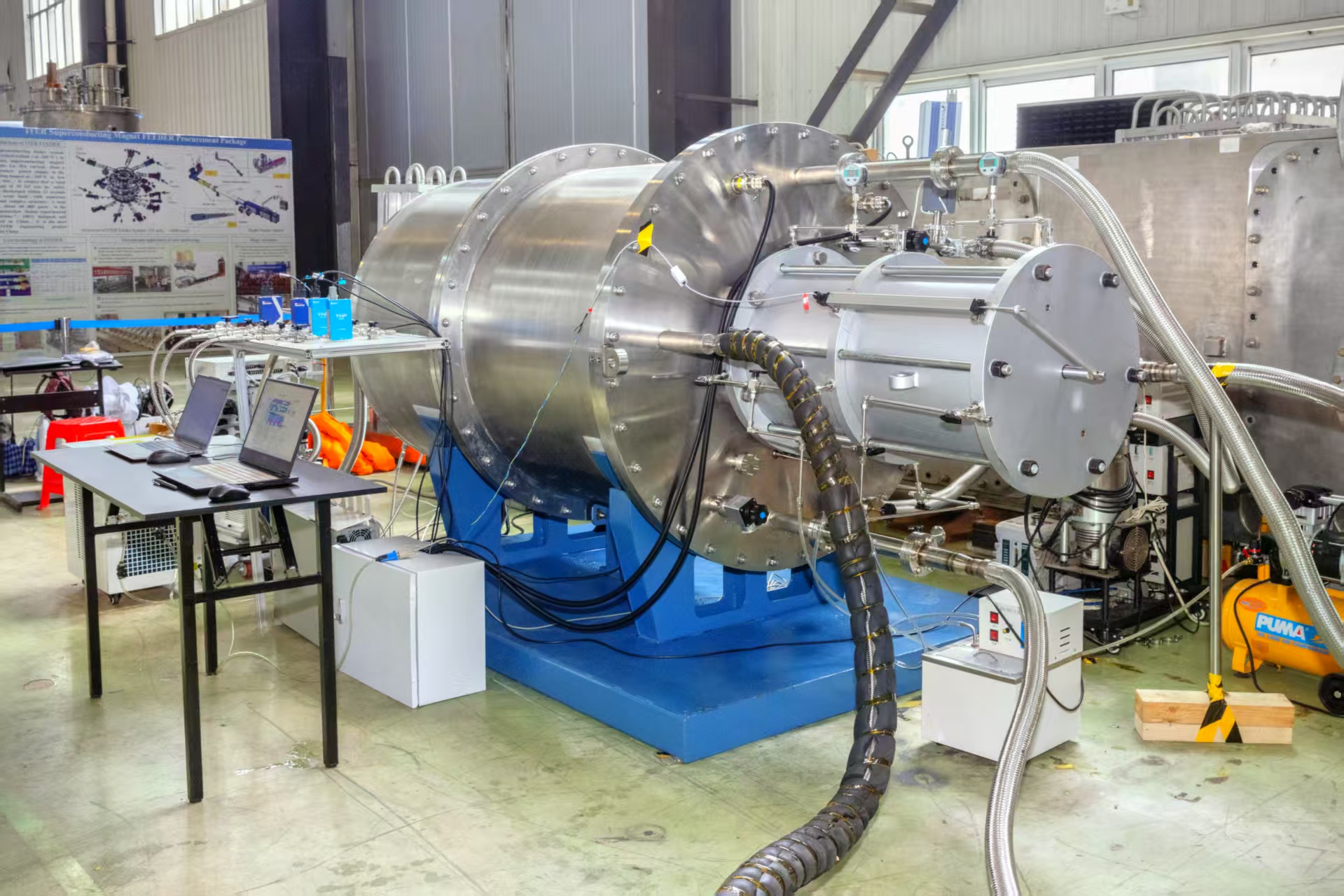
A research team at the Institute of Plasma Physics, the Hefei Institutes of Physical Science of the Chinese Academy of Sciences, has successfully developed a novel large-scale compound cryopump (multi-stage cryopump) capable of separating fuel particles from helium ash.
Designed to meet the demanding requirements of radiation resistance and efficient gas handling, the cryopump features an innovative structural configuration and utilizes a new fabrication technique. The team developed a process for bonding activated charcoal to cryogenic panels using an inorganic cryo-adhesive, ensuring long-term stability under extreme conditions. The full-scale prototype measures 1.2 meters in diameter, includes a 0.58-meter valve opening, and weighs 4 tons.
Cryopumps based on adsorption technology offer key advantages for fusion systems: large pumping speeds, broad operating temperature ranges, and high adaptability in harsh electromagnetic and nuclear environments. They are considered critical for the pumping systems of future fusion reactors, playing a central role in removing unburned deuterium-tritium fuel and helium ash—both essential to achieving stable plasma operation and sustaining fusion energy production.
The newly developed cryopump achieves a pumping speed of 110,000 liters per second for deuterium and 40,000 liters per second for helium. More importantly, it enables separate adsorption and independent regeneration of the two gases—a key innovation that provides a highly efficient and short-cycle fuel processing loop solution for fusion reactors.
This compound cryopump provides a viable solution for minimizing fuel retention, and lays a solid technical foundation for the development of cryopumps in fusion reactors.

Testing of the large-scale compound cryopump (Image by YANG Qingxi)